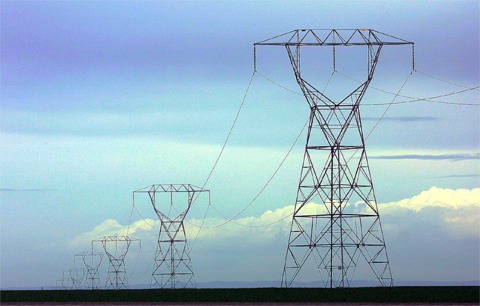forum
library
tutorial
contact

Bonneville Inherits the Wind
(and the Stimulus)
by Kate GalbraithNew York Times, February 23, 2009
|
the film forum library tutorial contact |

|
Bonneville Inherits the Wind
by Kate Galbraith |
 One of many intriguing items tucked away in last week's stimulus bill is extra borrowing authority for two giant government entities, one of them dating back to the New Deal, that help distribute and sell electricity from dams and other power sources in the West.
One of many intriguing items tucked away in last week's stimulus bill is extra borrowing authority for two giant government entities, one of them dating back to the New Deal, that help distribute and sell electricity from dams and other power sources in the West.
The stimulus allotted $3.25 billion in extra borrowing authority to the Oregon-based Bonneville Power Administration, as well as a total of $3.25 billion for the Colorado-based Western Area Power Administration, Bonneville's smaller sister utility, which serves 15 states. ("Borrowing authority" refers to their ability to borrow from the U.S. Treasury.)
I spoke with Stephen J. Wright, the administrator of 72-year-old Bonneville, about what his agency would do with the extra Treasury loans. Essentially, in the near term, he hopes to build more transmission lines to aid wind power.
Bonneville provides more than one-third of the Northwest's power, and its main power source is dams like the Grand Coulee. But the wind resources on Bonneville's system are growing quickly.
When the wind is blowing its hardest, it can provide roughly 18 percent of the peak electricity load in Bonneville's area. With windmills going up rapidly in eastern Oregon, Mr. Wright hopes to nudge that up to 30 percent by next year, and 40 percent in 2011.
Though the total amount of power produced by the wind is far less than these peak percentages (the wind doesn't blow all the time, of course) Bonneville's current 18 percent figure compares favorably with rates in Texas, the leading wind power state. Winds there can currently provide roughly 10 percent of the system's peak electricity when they are blowing most strongly.
"It's both exciting and nerve-wracking to be in that position, because we're figuring out how the wind works," said Mr. Wright of the rapidly growing power source.
The stimulus raises Bonneville's ceiling from $4.45 billion to $7.7 billion, and Mr. Wright plans to use the borrowing authority to help build a transmission line parallel to the Columbia River that will break ground this spring. He declined to say speculate about whether the $246 million line - which is clearly "shovel-ready" - would have been delayed without the stimulus, but did say that it made his decisions "a heck of a lot easier."
Ralph Cavanagh, a senior attorney with the Natural Resources Defense Council, gave Bonneville a rare stamp of approval.
"Bonneville is the largest investor in energy efficiency in the Northwest," said Mr. Cavanagh, "and has from my perspective the most sophisticated and environmentally productive transmission planning process of any of the major transmission owners in the country."
learn more on topics covered in the film
see the video
read the script
learn the songs
discussion forum
